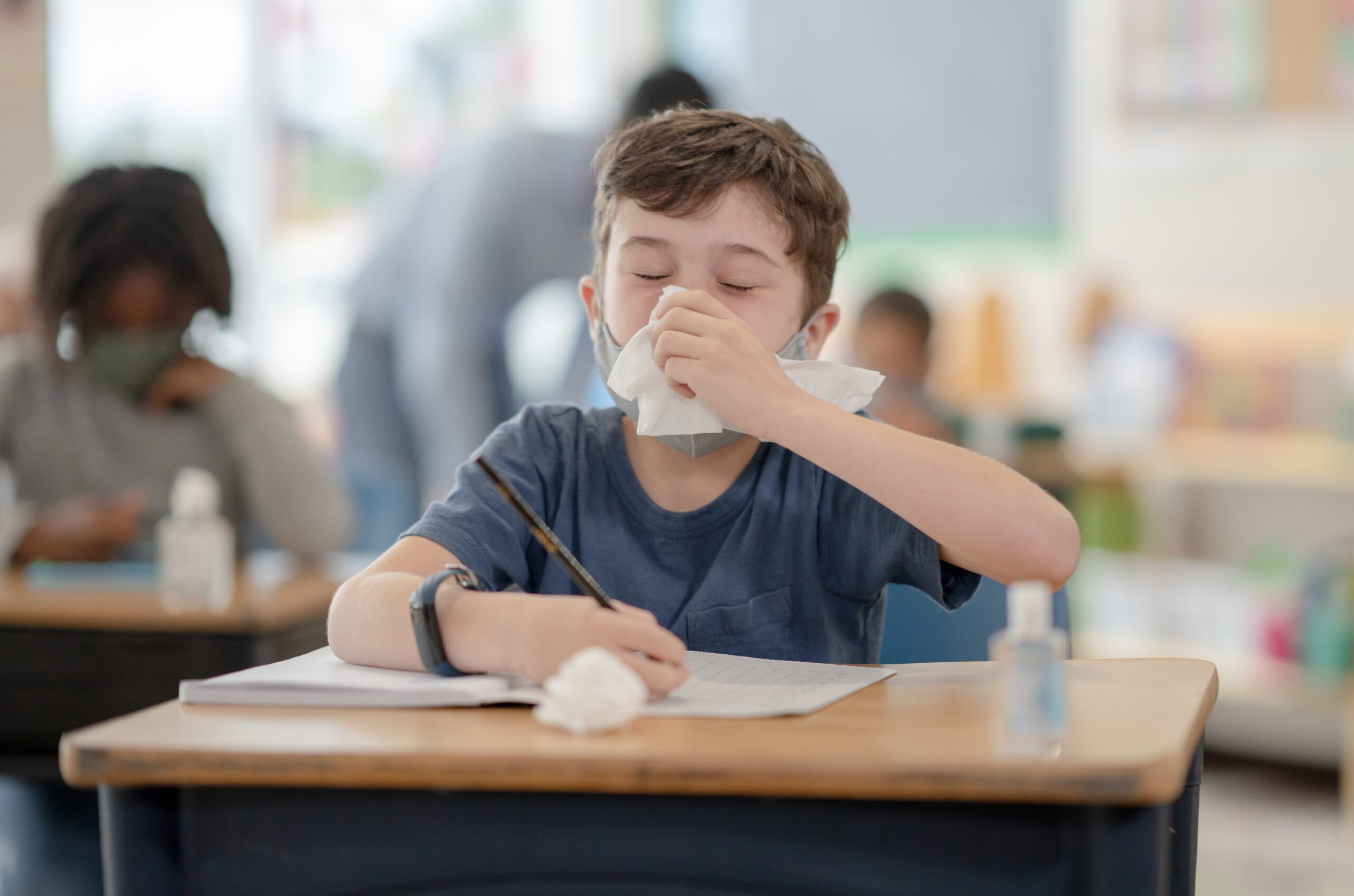Table of Contents
When children are coughing, it’s hard on their bodies – and hard on their parents, who wake up frequently in the night to tend to their needs and miss work during the day in order to keep sick children home.
Children spend nearly half their waking hours in the classroom – about six hours a day – and illnesses spread quickly when there’s a high volume of people in enclosed spaces.
While it’s hard to stop little kids from touching their mouth and nose, and hard to control the hygiene of children of all ages, there are protective and proactive measures we can take in the environment to prevent illness and children’s coughs from circulating.
One of the best ways to protect children in their classrooms is to ensure the air quality in schools is clean and efficient.
Read on to learn more about:
- The importance of air quality in classrooms
- Protecting kids from respiratory illness with better air quality
- Investing in kids health in the classroom
The importance of air quality in classrooms
Kids – especially young kids – don’t always remember to follow hygiene rules like frequent hand washing, or covering coughs and sneezes in elbows. As a result, illnesses spread like wildfire in classrooms.
The biggest impact on environmental health is the quality of the air we breathe. A lack of proper air quality in classrooms means our children’s health may be impacted by:
- Bacteria
- Respiratory viruses
- Mould growth in old or damp buildings
- Air pollution due to industrial chemicals in urban areas or pesticides in rural areas
The quality of our air is important to our overall health, not just the health of our lungs.
There can be both immediate and long-term effects when exposed to indoor air pollutants, including:
Immediate effects after exposure:
- Nose, eye and throat irritation
- Headaches
- Dizziness
- Fatigue
Long-term effects after exposure:
- Respiratory diseases
- Heart disease
- Cancer
When children are struggling with sickness, or aren’t at their optimal health – learning becomes interrupted, sometimes multiple times in one school year.
Reducing the spread of RSV, flu, and COVID-19 in schools
Illnesses like RSV, influenza, and COVID-19 have been running rampant through schools and overwhelming hospitals.
Contagious illnesses like flu, RSV and COVID can have a long-term impact on the respiratory health of children.
Yet, the tools to enhance air quality in schools and protect children from respiratory illness exist. Read on to learn more.
Protecting kids from respiratory illness with better air quality
Children’s lungs don’t finish developing until after they’re born, which is why it is so important to protect children – especially young children – from respiratory illnesses.
Clean air and healthy lung development go hand in hand – which is why air purifiers are so important in school settings.
Many schools across the country were built decades ago, with very little attention to air circulation, air flow and air filtration. Some schools don’t even have windows that open to allow fresh air to circulate.
However, today, every school classroom and school bathroom can be equipped with an air purifier to help eliminate harmful bacteria from the air.
Air quality and HEPA filters
HEPA filters help to control the spread of COVID-19 in classrooms, keeping both kids and teachers safe from contagious illnesses.
Proper air ventilation is a useful method to reduce the spread of COVID-19 in indoor settings by moving infectious particles out and moving clean air in.
Schools can improve indoor ventilation by installing air purifiers in classrooms and protect children and educational staff from inhaling harmful bacteria from unclean air.
One of the smartest air purification systems that is scientifically proven to reduce 95% of bad odours safely and sustainably is the EcoBreeze Smart. It was specifically designed to create safe air and a healthier area by reducing volatile organic compounds (VOCs) in the air.
Did you know? HEPA filters remove 99.9% of bacteria and viruses from the air!
Invest in kids health in the classroom
The number one priority of parents and educators is to improve kids’ health in the classroom in order to reduce the spread of respiratory illnesses that are overwhelming children’s hospitals.
Illnesses spread through the particles emitted by children’s cough and sneeze, which means the best method to combat contagion is to move clean air in, and germs out.
At Citron Hygiene, we understand the burden placed on janitorial staff in educational settings – which is why we offer solutions that eliminate items from your janitorial staff to-do lists.
Citron Hygiene will:
- Help set-up and maintain air purification technology to achieve surgically clean air
- Install HEPA filter focused hand dryers like our Pebble+ system
- Provide regular maintenance and efficiency testing
Additional services that reduce the spread of contagious illnesses in classrooms include:
- Installation and maintenance of touch-free technology in high touch areas like school bathrooms
- Professional hygiene waste removal services
To learn more, visit our website, and contact one of our expert hygiene technicians to schedule your free school bathroom consultation.
Related posts:
- Invest in Employee Health and Wellness
- School Bathrooms: Preventing RSV, Flu and COVID-19 in Kids
- Hygiene Tips for Your Business: Children’s Play Centers
- Hygiene Tips for Your Business: Health and Country Clubs
- Free Hand Washing Poster for Kids
- 10 Items That Have More Germs Than a Toilet Seat
- Citron Certified Technicians: The gold-standard in facility hygiene services
- How much does a sick day really cost?
